Heading to the tiny Principality of Liechtenstein and looking for expert travel tips to help plan your trip as a solo woman traveler? You’re in the right place.
In this article you will find a list of travel essentials, suggestions, planning tips, local customs and more to help you get started and prepare for your trip.
If you’re looking for a winter packing list to Liechtenstein, you can find our recommendations here.
Brief history of Liechtenstein
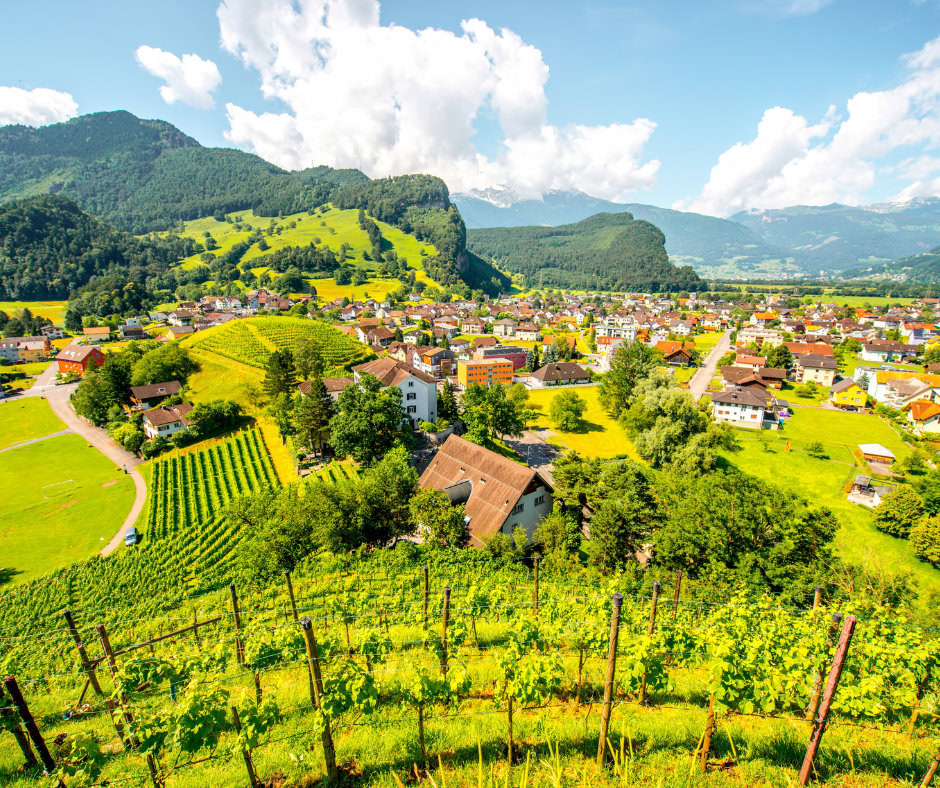
Liechtenstein is one of the smallest countries in Europe and the world.
Sandwiched between Switzerland and Austria and with strong ties to both, it followed a similar model to Switzerland since WWII, becoming a neutral financial center and a remarkable example of stability and growth.
The country is ruled by the Prince of Liechtenstein, who retains significant political power, making it one of the few constitutional monarchies with an active royal presence in governance left in Europe.
Its origins can be traced back to the Liechtenstein family that gave the country its name, a noble lineage from Lower Austria that purchased the small lordships of Schellenberg in 1699 and Vaduz in 1712.
These two territories were critical to the family’s aspirations to own land and were united in 1719 by Emperor Charles VI to create the Principality of Liechtenstein.
With the Napoleonic Wars, Liechtenstein became a sovereign nation in 1806 but remained a poor, double landlocked agricultural country until WWI when its alignment with Austria almost caused its financial collapse.
After the war, Liechtenstein decided to strengthen its ties with Switzerland instead and it adopted the Swiss Franc as its currency.
During WWII, the country remained neutral and managed to stay away from the turmoil that affected most of Central Europe.
The second half of the 2th century saw Lichtenstein grow thanks to favorable tax laws and strict banking secrecy laws that attracted financial services institutions and banks to its borders, bringing a new wave of growth.
Quick facts about Liechtenstein
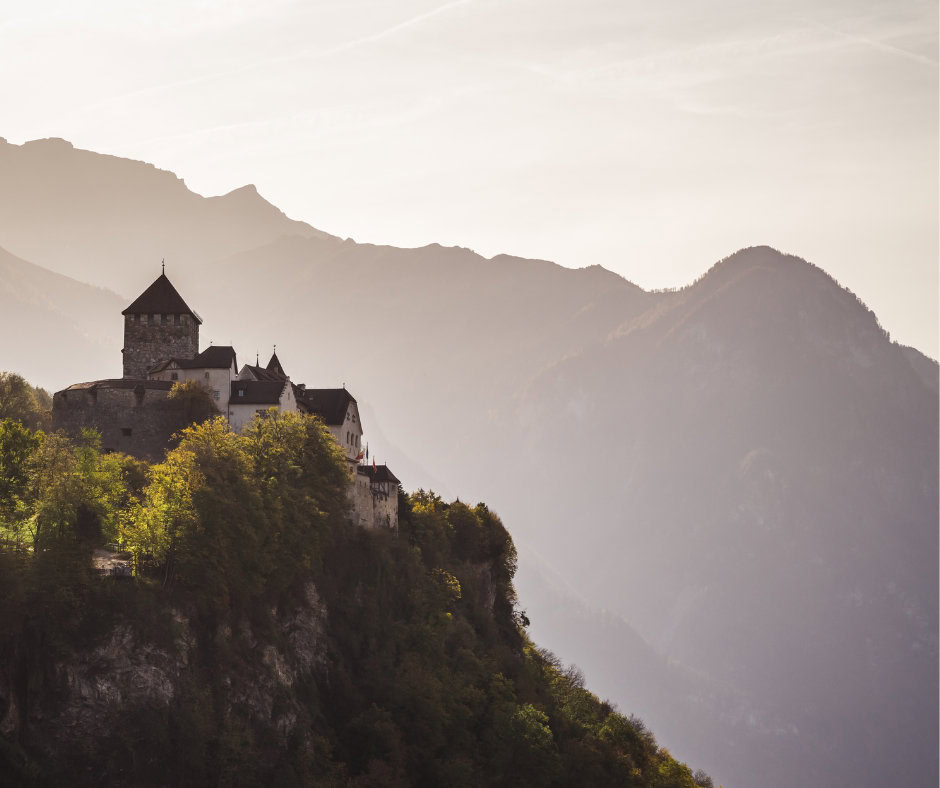
This tiny country in the heart of Europe is as unique as it gets, and here are some fun and interesting facts to prove that:
- Very small but rich: Liechtenstein has a tiny population of 40,000 inhabitants, although 35% are expats, primarily from Switzerland and Austria. Many of those working in the country live across the border in Austria or Switzerland and commute daily. This makes it the 6th smallest country in the world after Nauru, Tuvalu, Andorra, Monaco and San Marino. Small as it may be, it is also mighty, and currently ranked second wealthiest country in terms of GDP per capita in the world.
- Inexistent borders with Switzerland: As mentioned before, it’s hard to know where Liechtenstein begins and where Switzerland ends, and I am not the only one. Switzerland has accidentally invaded it three times for the same reason.
- More companies than people: Because of how few people live in Liechtenstein, there are almost twice as many registered companies than people.
- Double landlocked: Liechtenstein does not have access to any sea or ocean and neither do the countries it shares a border with (Austria, Switzerland) making it a double landlocked country. It is one of only two double landlocked countries in the world, the other one being Uzbekistan. To reach the sea you would have to drive through Switzerland and across Germany or Italy.
- Mountainous: This is a country in the mountains and located between 450 m and 2600 m above sea level.
- Meaning: Liechtenstein means light / bright stone in German.
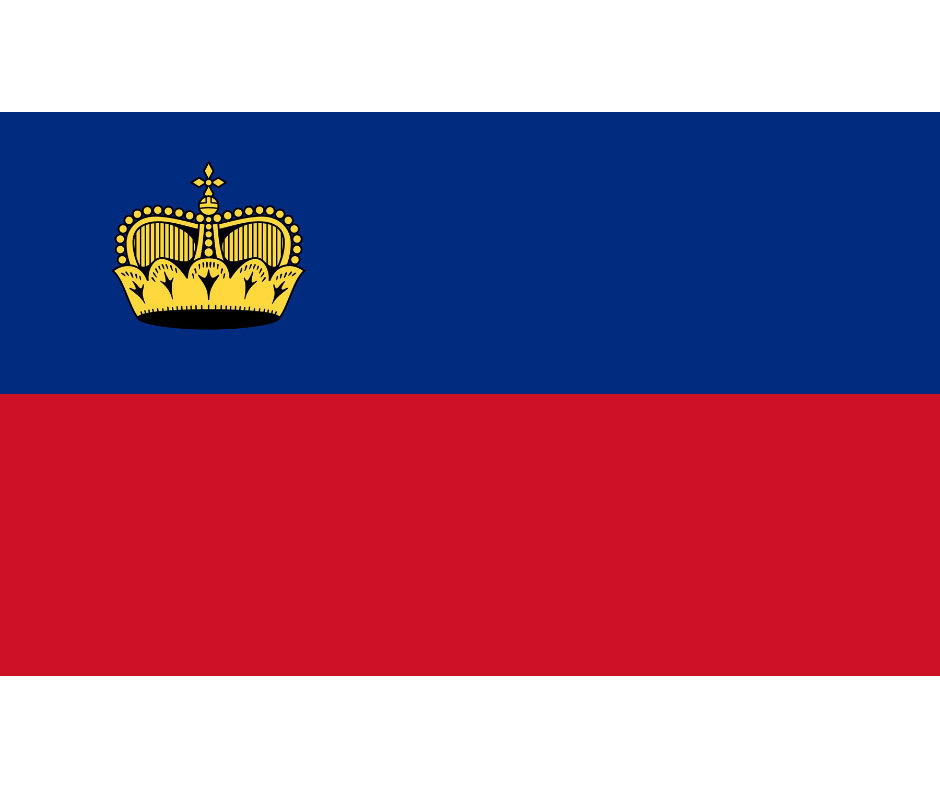
- Flag: At the 1936 Berlin Summer Olympics, Haiti and Liechtenstein discovered their flags were the same. To avoid future confusion, Haiti added its national crest and Liechtenstein added a yellow crown
- Women’s rights: Despite its wealth and economic development the country only granted women the right to vote in 1984, it was the last country in Europe to do so.
- Rent a country: In 2011, Liechtenstein made itself available for rent, yes, the entire country! You could jump on Airbnb and book it all, though apparently nobody did. For 60,000 a night, you and your 150 friends could enjoy the entire country and even change the street names.
- No airport: Very few countries have no airport and Liechtenstein is one of them. To arrive, you need to fly into Switzerland (Zurich is 2 hours away by car) or Germany (Friedrichshafen Airport).
- Tourist stamp: Because Liechtenstein is part of the Schengen zone and has no airport, the only access is via two other Schengen zone members with whom it has no borders, Switzerland or Austria. Therefore, you won’t have to go through immigration or get your passport stamp to enter. If you want your passport stamped, you can head to the Tourist Office in Vaduz and they’ll happily oblige with a tourist stamp. Beware that novelty stamps like this one that does not come from a Government body could, technically, invalidate your passport, although I have never heard anyone have problems with it.
- Strong ties with Switzerland: Liechtenstein shares an open border with Switzerland and you may move between the two without realizing. It uses the Swiss franc as its currency and it relies on its neighbor for military defense, as it has no army. The German dialect spoken in the country is also similar to the one spoken in parts of Switzerland.
- Monarchy with power: Many countries retain monarchies in Europe but Liechtenstein’s Prince has real power. He can veto laws, dissolve Parliament and call for new elections. The royal family is close to its people and opens the castle to them on marked occasions such as the National Day celebration.
Liechtenstein travel tips
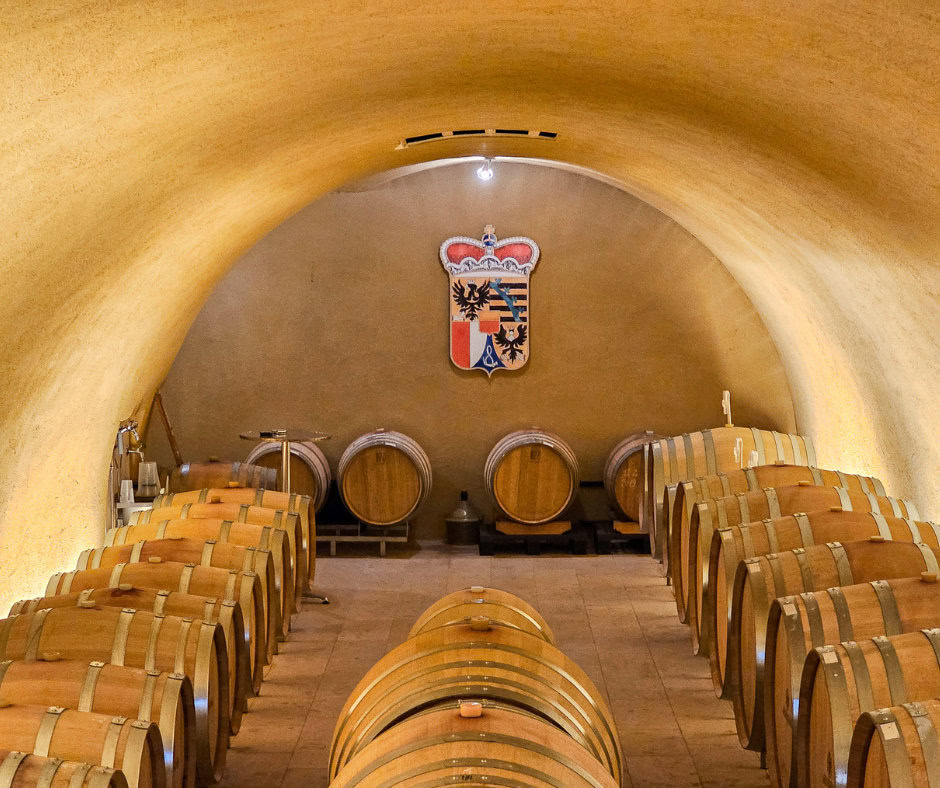
In this section we want to share general Liechtenstein travel tips to help you plan your trip.
When to visit
Liechtenstein enjoys continental weather with cool summers and cold winters with plenty of snow.
Summertime is a wonderful time to visit to enjoy the many trails and mountain landscapes and it is the peak time to visit. Winter is a time for winter sports, but the country has a hard time competing with nearby Switzerland or Austria when it comes to ski resorts despite its location on the Alps.
Springtime sees beautiful blooming wild flowers and autumn witnesses the changing of the leaves and the fall foliage, it is also the time for the wine harvest and to enjoy the peace and quiet after the summer crowds have left.
Most visitors to the country come on a day trip or excursion from Switzerland, Germany or Austria. If you can stay overnight or longer, you can take in all the wonderful hikes.
Here are the temperatures and rainfall through the seasons in Vaduz:
- Summer – June to August: 11 C to 24 C (52 F a 75 F) and 15 to 21 days with rain.
- Spring – April and May: 1 C a 15 C (35 F to 59 F) and 15 to 21 days with rain.
- Fall – September, October: 0 C to 10 C (32 F to 50 F) and 11 to 15 days with rain.
- Winter – November to March: -3 C to 10 C (27 F to 50 F) and 12 to 16 days with snow.
Public holidays close all businesses in Liechtenstein and make it hard to explore the country but are also an opportunity to experience a different side of the culture.
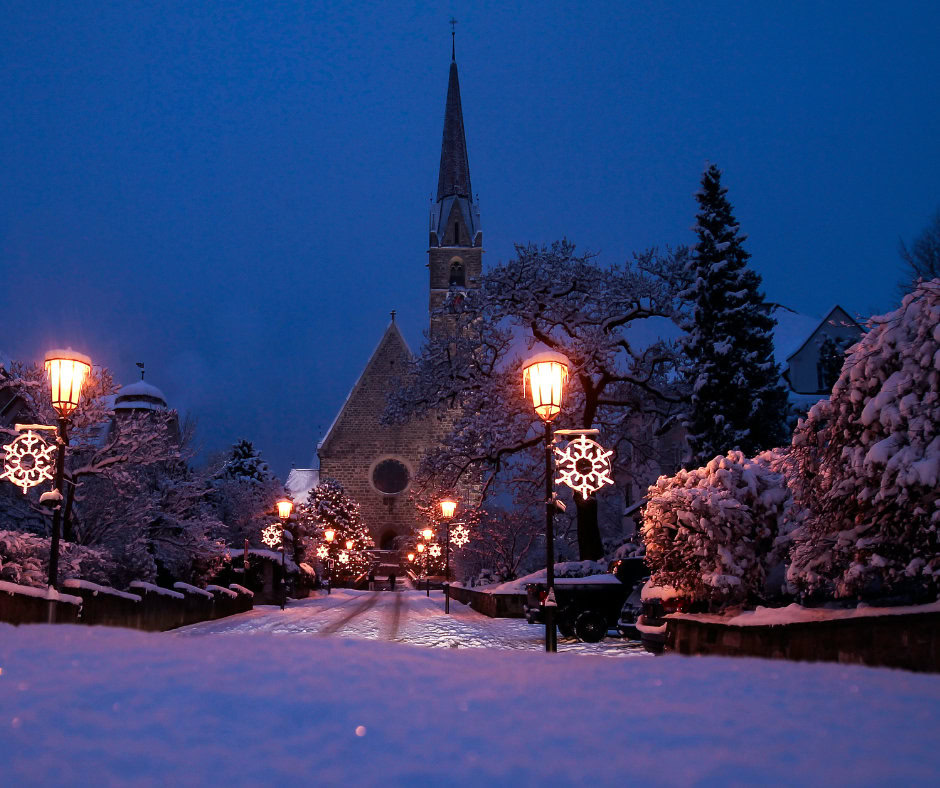
Liechtenstein observes most Catholic holidays and has a few country-specific celebrations:
- 1st January – New Year’s Day.
- 6th January – Epiphany, the visit of the 3 Kings of Orient to the infant Jesus and celebrated with church service and special meals.
- 2nd February – Candlemas, a Catholic holiday that marks the presentation of Jesus at the temple.
- Shrove Tuesday, day before Ash Wednesday (varies every year) – It’s the last day of Carnival, the last chance at debauchery before the start of the 40 days of Lent before Easter.
- Easter Friday and Monday (varies every year) – Resurrection of Jesus Christ.
- 1st May – Labour Day.
- Ascension Day (40 days after Easter) – Ascension of Jesus into heaven.
- Whit Monday (50 days after Easter) – The Holy Spirit’s descent on the apostles.
- Corpus Christi (60 days after Easter) – Celebration of the Eucharist, with processions where people carry religious symbols.
- 15th August – National Day, when the monarchy opens its doors to the castle and invites residents to visit and mingle.
- 1st November – All Saints Day, a day to visit cemeteries to remember and honor the saints, martyrs and family members who passed away.
- 8th December – Immaculate Conception of the Virgin Mary.
- 24th December – Christmas Eve.
- 25th December – Christmas Day.
- 26th December – St Steven’s Day.
Passport and visa requirements
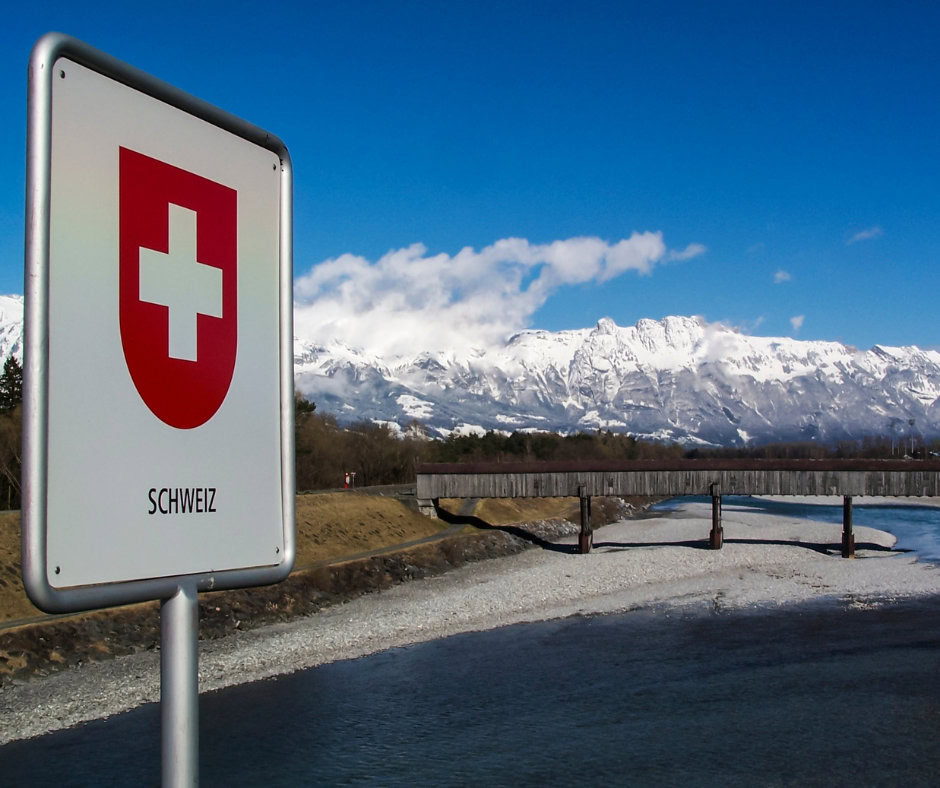
In this section we will look at the requirements to enter Liechtenstein.
Schengen visa: Lichtenstein is part of the Schengen Zone and the European Economic Area (EEA) but not of the European Union. If you are a citizen of a non-Schengen country without a visa-free travel agreement with the area you need a Schengen visa. You should apply for it at the embassy of the country you plan to first enter the zone by. Your Schengen visa is typically valid for up to 90 days of travel within the zone in a 180 days period.
Because Liechtenstein does not have an airport and it has limited embassy representation overseas, it does not issue its own Schengen visas. As the official Government states, “Without exception the same visa requirements apply to travelers to Liechtenstein as they do to travelers to Switzerland”.
Therefore, you would need to apply at the embassy of Switzerland, or at another Schengen country’s embassy if you plan to visit other countries before Liechtenstein and Switzerland.
Health and safety
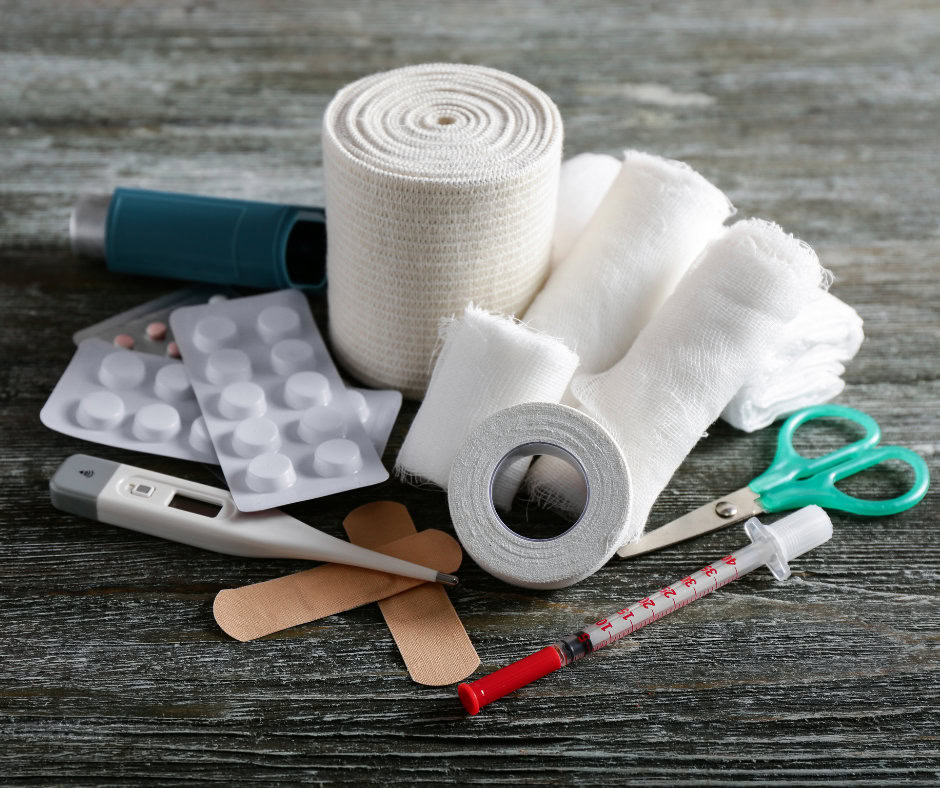
Nobody wants to get sick when on vacation but, if the worst is to happen, it pays to be prepared.
Bring all the medication you’ll need: During your trip to Liechtenstein, you will typically never be too far from Vaduz, a doctor, a hospital and a pharmacy. We strongly recommend you bring any prescription medication you may need and enough of it to last you the entire trip.
Your specific medication may not exist in Liechtenstein, or it may require a prescription you need to see a doctor for, so save yourself time and hassle by bringing everything you may need with you. Review what you should bring in your first aid kit here.
IMPORTANT: Some prescribed and over-the-counter medicines available in your country might be considered controlled substances in Liechtenstein. A doctor’s prescription including generic names, is required in all cases, which should mention your details, the types of medicine and the condition treated. More details here.
Get that coverage: We never leave the house without purchasing extensive medical and travel insurance coverage and this is why we make it mandatory to join our tours. You should make sure that you have adequate medical insurance to cover any unforeseen medical expenses. Unexpected accidents do happen, and if you needed to be evacuated back home with an injury, the medical bill could bankrupt you.
The best travel insurance will differ for each traveler, depending on the nature, style, and length of your trip, so we recommend using an aggregator and comparison tool such as Travel Insurance Masters to find the right one for you depending on what coverage you want, age, location, trip, etc.
For European Economic Area (EEA) residents, carry an European Health Insurance Card (EHIC) or a Global Health Insurance Card (GHIC) as this will allow access to state-provided healthcare at a reduced cost, or sometimes for free, for emergencies and accidents.
IMPORTANT: This is only medical emergency cover and does not substitute adequate travel insurance; it does not cover medical evacuation, repatriation or mountain rescue.
In case of emergency: Liechtenstein’s emergency services number for immediate assistance with fire, police, and ambulance services is 112, the same as in all other European Union and EEA. Other important numbers:
- Police and Mountain rescue – 117
- Emergency Medical Service- 144
- Fire Department – 118
- REGA Rescue helicopters – 1414 / International: +41 333 333 333
- Road assistance – 140
- Poisoning emergencies – 145
Tap water: Tap water in Liechtenstein is considered safe for drinking.
Safety in Liechtenstein for solo female travelers
Liechtenstein is considered one of the safest destinations for solo female travelers, and there is practically no crime.
If you’d like to add another layer of protection in case of petty theft or the risk of pickpocketing, use a slash and theft proof cross-body bag like the ones we listed in this article.
Read our full article on general travel safety tips here.
Getting to and around Liechtenstein
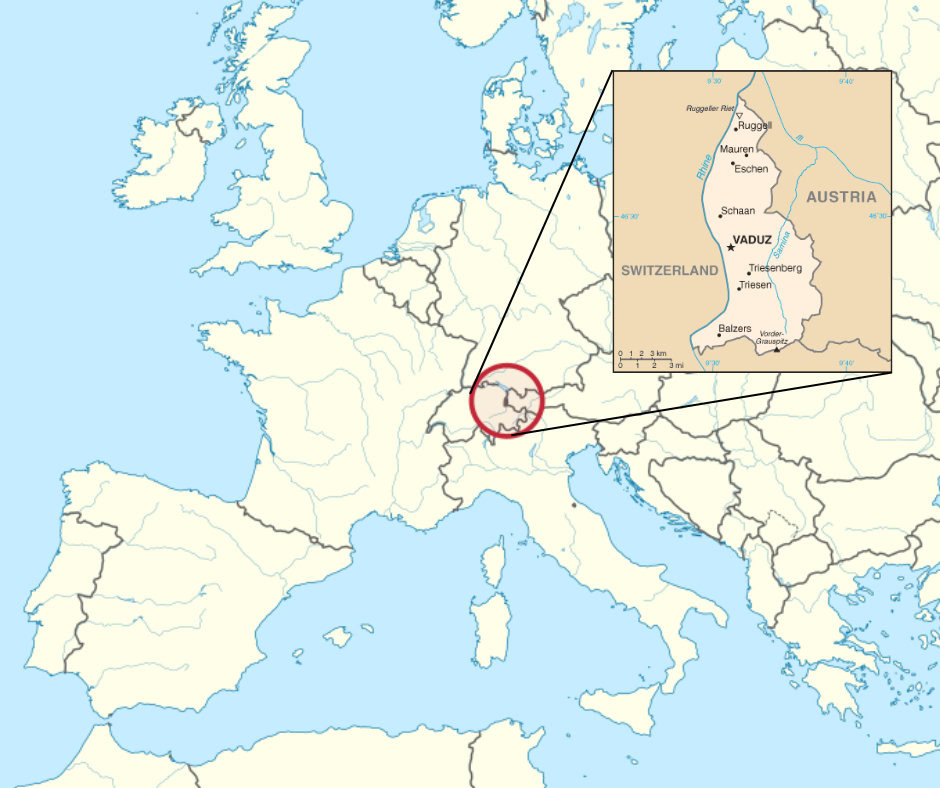
As a double landlocked country, the only way to get to Liechtenstein is via Austria or Switzerland by road.
The nearest airports to Vaduz are in Zurich, Switzerland (2 hours away by car) or Friedrichshafen, Germany (1 hour by car). Munich is less than 3 hours away and Salzburg just over 4 hours.
Liechtenstein is a tiny country and if you base yourself in Vaduz you will be able to see most of it on foot. There are also buses to get around.
However, the best way to explore the country is by car. Rent one at the airport of your landing and drive yourself. Roads are excellent and well maintained.
How many days to spend in Liechtenstein
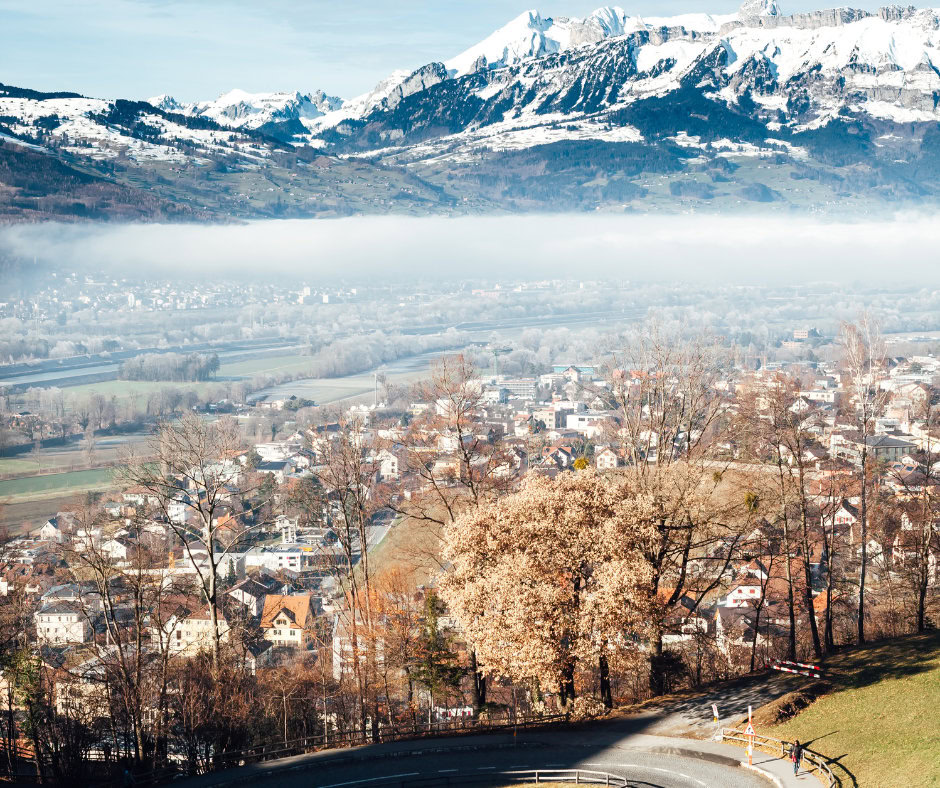
As you may have guessed, there is not a lot to do in Liechtenstein and typically, a day or two is enough to explore most of what it has to offer. If you can spend a night there, you will also have the chance to enjoy the local cuisine.
Top places to see and things to do in Liechtenstein as a solo female traveler
In this section, you will find our favorite places to visit and things to do in Liechtenstein if you are traveling solo.
Visit the Treasury
This compact museum exhibits the art collection of the House of Liechtenstein and includes all sorts of precious objects, from Faberge eggs to the family’s Crown Jewels. You need to get an entry ticket from the Tourism Office nearby to enter.
Panoramic views from Sareis
Take the chairlift from Malbun and head up 2000 m above sea level to Sareis mountain restaurant for the most impressive views. In the winter, you can ski down to the valley.
Visit the Court Winery Liechtenstein in Vaduz
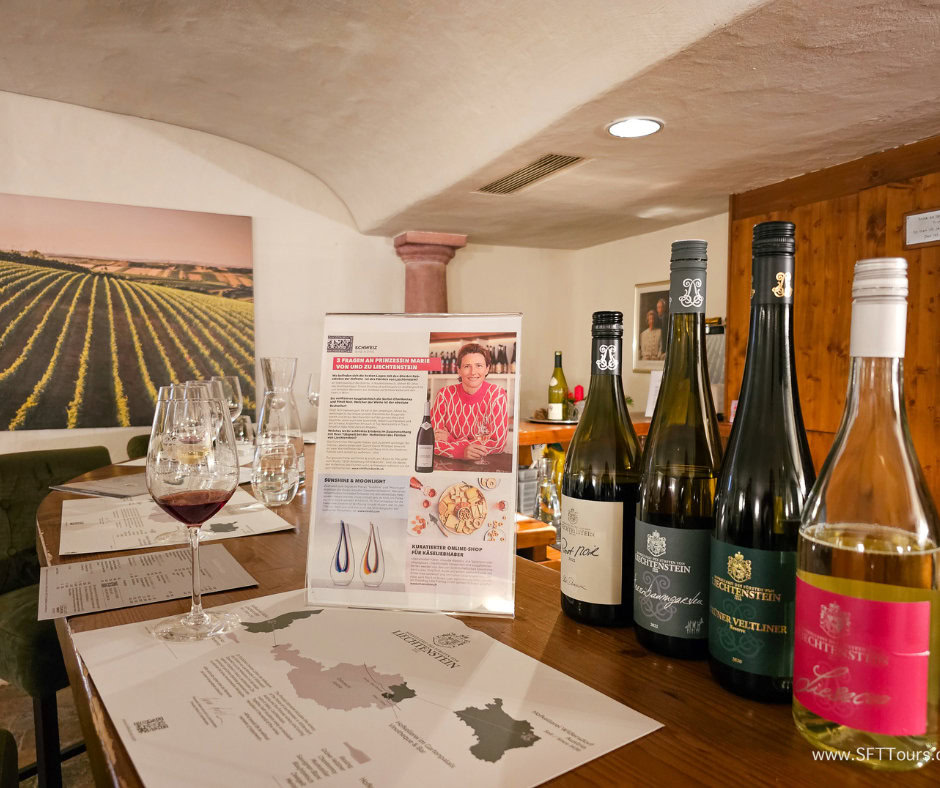
Did you know that there are several wineries in Liechtenstein and that Princess Marie of Liechtenstein leads the one owned by the royal family?
The princely domain has wineries in Vaduz and Wilfersdorf, Austria. You can visit the winery and cellar in Vaduz and learn more about their wines while you taste them.
Vaduz Castle
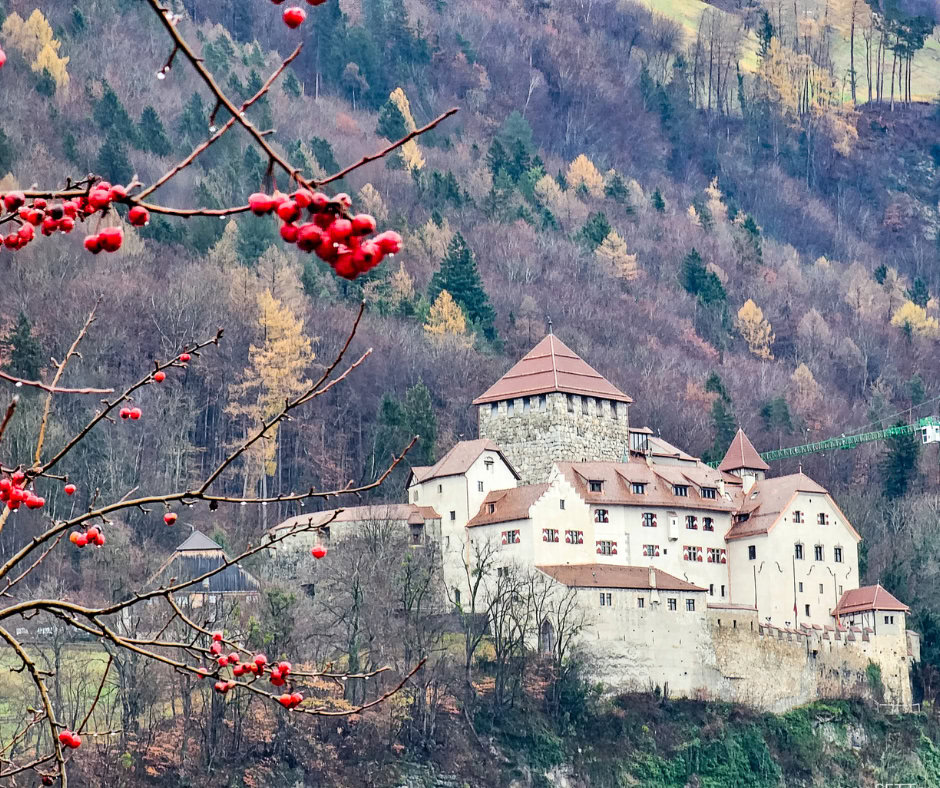
While you can’t visit the inside of the castle outside of the main celebration days when it opens its doors to the public, you can hike 120 m up to it and enjoy the views from above. From Vaduz, there is a path with stairs heading there.
The castle dates back to the 13th century and has been the official residence of the Prince and his family since 1939.
Vaduz
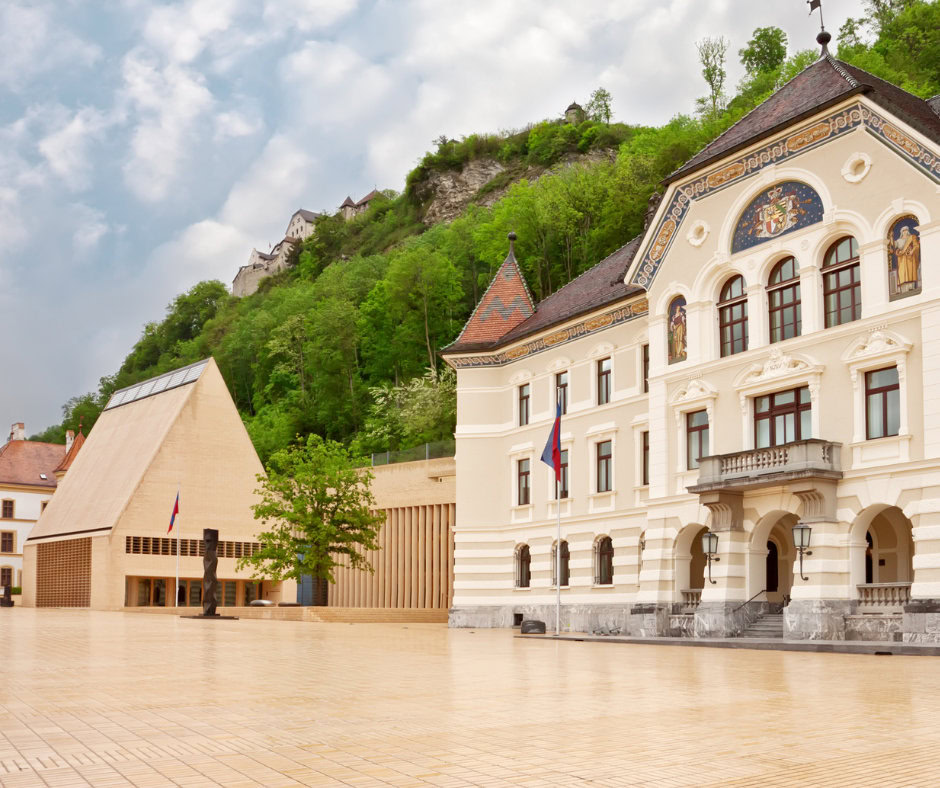
The small capital has a compact city center that can be easily explored on foot in a couple of hours. You will find street sculptures, the Treasury, three art museums, the National Museum and PostalMuseum.
Meet and hike with alpacas and llamas
There is an alpaca farm above Vaduz where you can meet these furry friends and go for a hike with them.
Hiking
For such a small country, there are so many hiking trails that you could spend days just wandering around. The tourism office has lots of information and you can check this page for more.
Travel essentials for Liechtenstein
In this section we will look at a range of other things to consider when traveling to Liechtenstein as a solo female traveler.
Staying connected: Public free WiFi hotspots are easy to find but if you want to be connected all the time, explore roaming options with your home mobile provider, or buy an eSIM like Airalo, AloSIM or Holafly (unlimited internet and a 5% discount).
Make sure your phone is unlocked so that a foreign SIM card or eSIM will work, and get the store staff to help you set up the new SIM card before leaving the shop so they can help you with any settings that need changing.
IMPORTANT: If you are roaming with a European Union SIM card, free roaming applies to the entire Union plus the European Economic Area members of Iceland, Liechtenstein and Norway, but not to Switzerland. Because there is no obvious border between Liechtenstein and Switzerland, and because Liechtenstein is so small, you may find yourself crossing between the two without realizing and may incur unexpected roaming rates. Watch your phone closely when near the border to identify the telecom operator your phone is connecting to, or switch to manual selection.
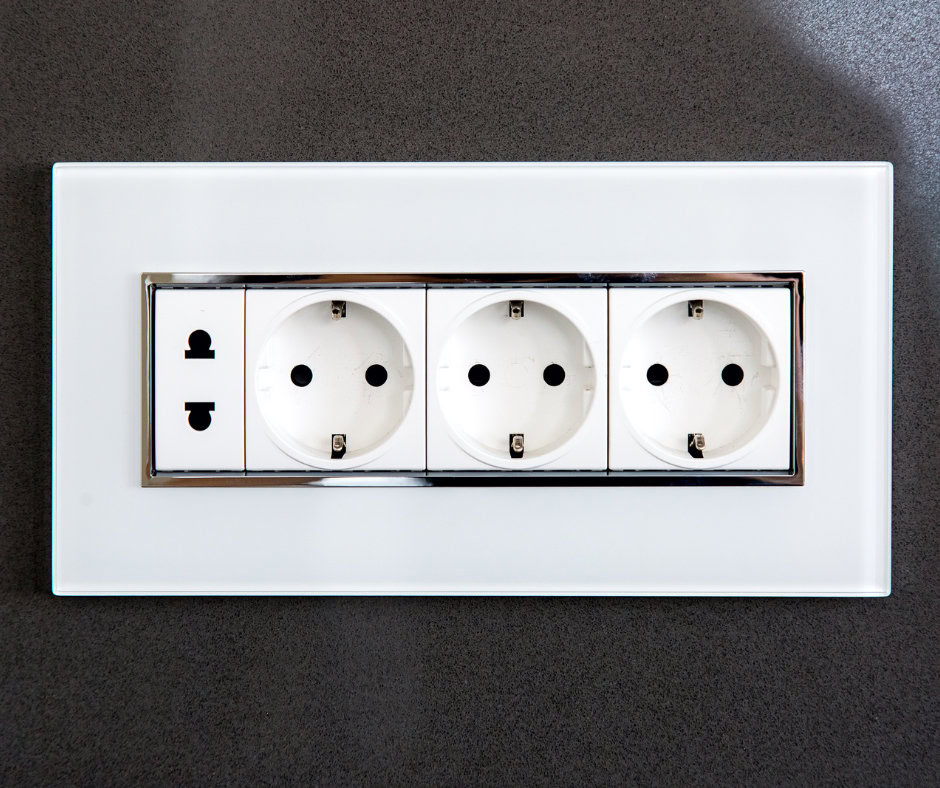
Liechtenstein plugs: Liechtenstein uses Type C and J electrical outlets and plug with two or three round pins. If you are traveling to Liechtenstein from a country that uses a different plug type, such as Type A (used in the US and Canada) or Type G (used in the UK), you will need a plug adapter to fit your devices into Liechtenstein electrical outlets.
Dual voltage: Liechtenstein uses a standard voltage of 230 volts AC (50 Hz), which is much higher than Canada and the US’s 120 AC (60 Hz). Many modern electronic devices, such as laptops and smartphones, are dual voltage and only require a plug adapter to be used in Liechtenstein.
Regardless, it’s important to check the voltage ratings on your specific electrical devices to ensure they are compatible before use, or bring along a voltage converter to make sure you don’t fry your favorite hair tools.
Currency: Liechtenstein uses the Swiss franc as its own currency and credit cards are widely accepted everywhere. There are ATMs in the city center of Vaduz.
Pro tip: Avoid ATM machines that are standalone and not attached to a bank like Euronet. These charge exorbitant fees and give an extremely poor exchange rate, as they are an exclusive ATM business. Additionally, if your card gets taken, it is much harder to retrieve it than from a bank.
Tipping culture: Tipping in Liechtenstein is not expected and a service charge will most likely already be included in your bill.
Relaxed and laid back. Liechtenstein is a pretty relaxed and quiet place. Businesses and shops close at 5pm and dinner is early, from 6pm onwards. Sundays are extra quiet family time devoted to outdoors activities and most businesses are closed.
Basic German
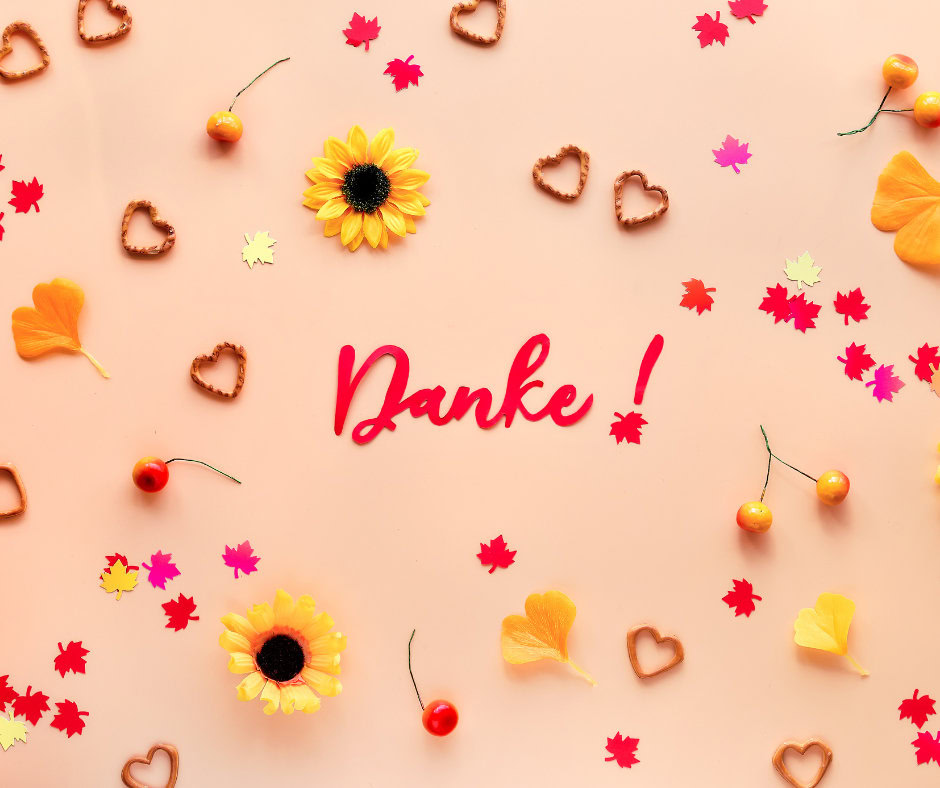
German in Liechtenstein is a specific local dialect that is also spoken in some parts of Switzerland. Below are some useful local words:
- Hoi (“hoy”): An informal way to say “Hi,” similar to “Hello,” often used among friends.
- Guten Morgen (“goo-ten mohr-ghen”) – Good morning.
- Guten Tag (“goo-ten tahk) – Good day/afternoon.
- Gute Nacht (“goo-ten nahkt”) – Good night.
- Auf Wiedersehen (“auv-veeder-sen”) – A more formal Goodbye.
- Tschüss (“chooss”): A common way to say “Goodbye,” informal and often used among friends.
- Wie gaht’s? (“vee gahts?”): This means “How are you?” and is a casual way to ask someone about their well-being.
- Danke (“dahn-keh”): The word for “Thank you,” commonly used in everyday interactions.
- Bitte (“bit-teh”): It means “Please” or “You’re welcome,” depending on the context.
Local Cuisine
Gastronomy in Liechtenstein is very similar to that of Switzerland and reflects the country’s location in the mountains and its colder weather.
Best Foods to try in Liechtenstein
Some of the most popular must try:
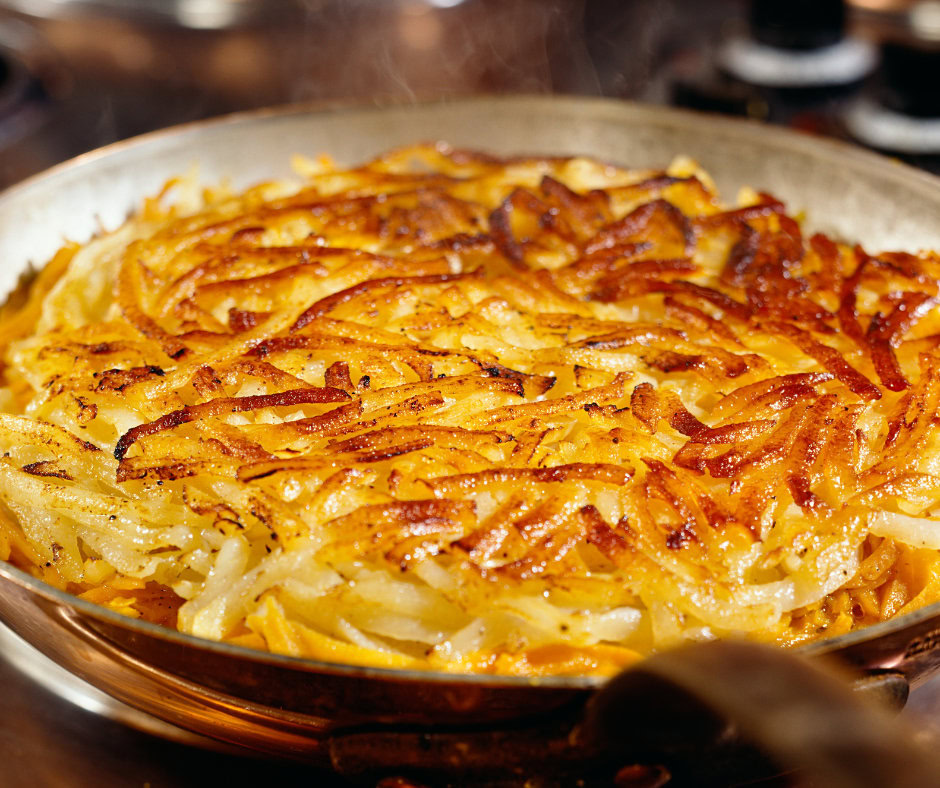
- Rösti: This Swiss-inspired potato dish looks like a giant hash brown and is usually a side dish and can be topped with cheese, bacon, or eggs.
- Ribel: A combination of cornmeal and milk, cooked slowly until it forms a crumbly, golden mixture. It’s the local version of oatmeal if that was served dry, and often eaten as breakfast or side dish.
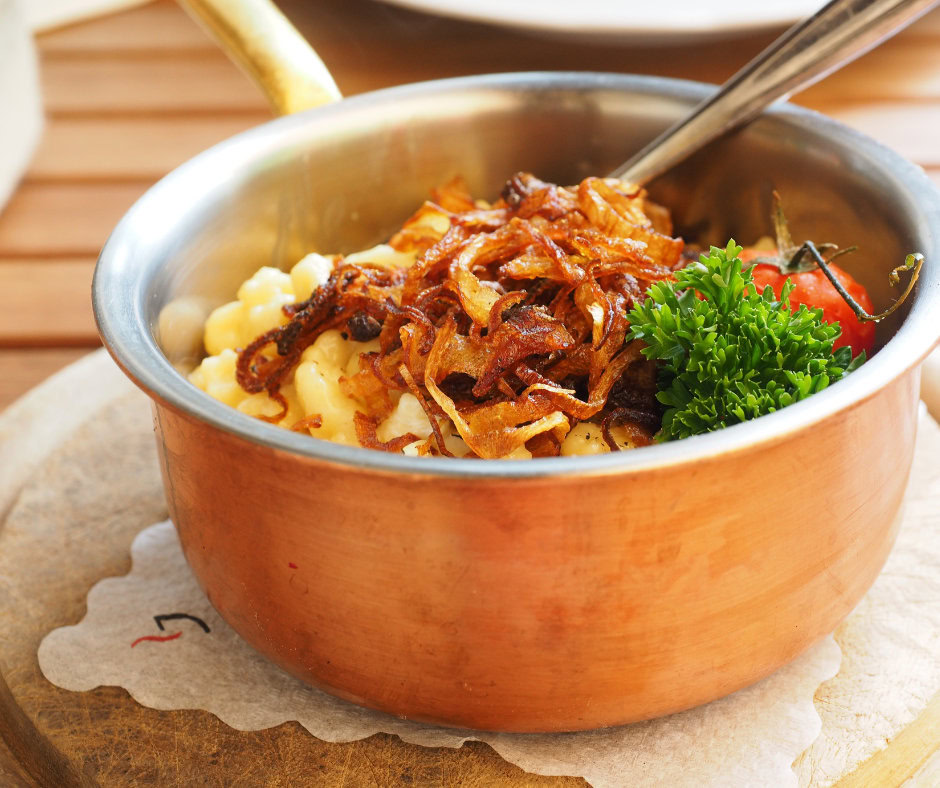
- Käsknöpfle: Similar to the German or Swiss Käsespätzle, it’s a twisted pasta / dumpling looking dish made of potato and covered in cheese. It’s delicious and hard not to indulge in when it’s cold outside.
- Kalbsbrätknödel: Veal dumplings often served in a clear broth, the local version of Chinese dumpling soup and a great way to warm up in the cold winter days.
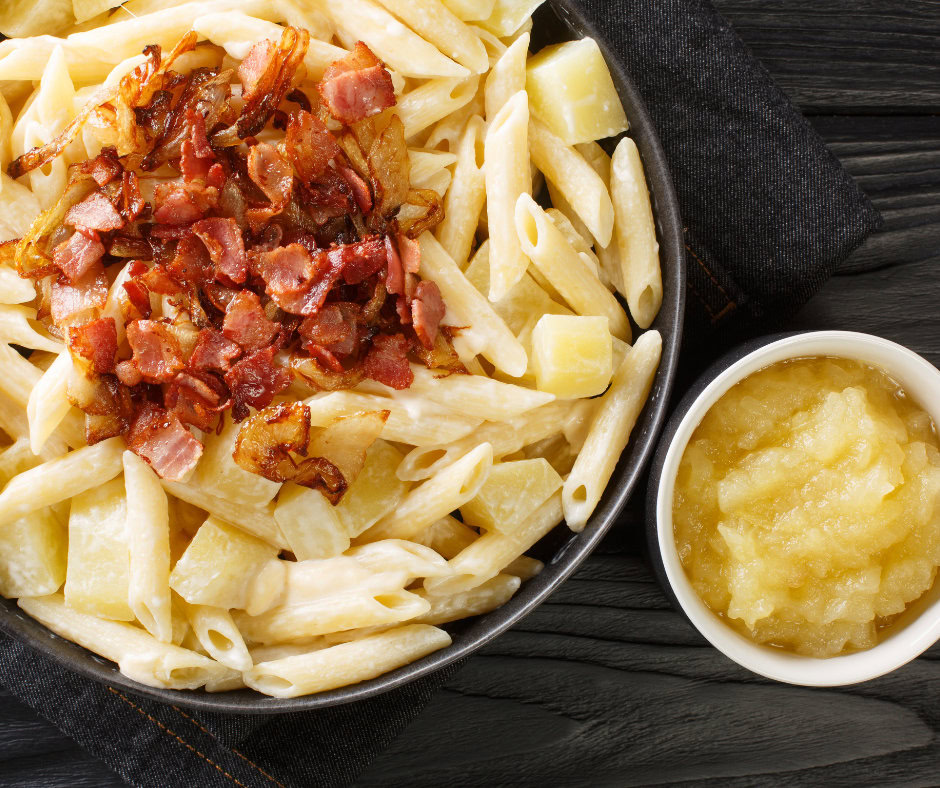
- Alplermagronen: Sometimes referred to as Alpine macaroni, this is a hearty pasta dish made with potatoes, cream, cheese, and onions, often served with applesauce. It’s the local version of mac and cheese.
- Liechtensteiner Wurst: Local sausage variants made with all kinds of meat and typically eaten with bread, mustard, and a beer.
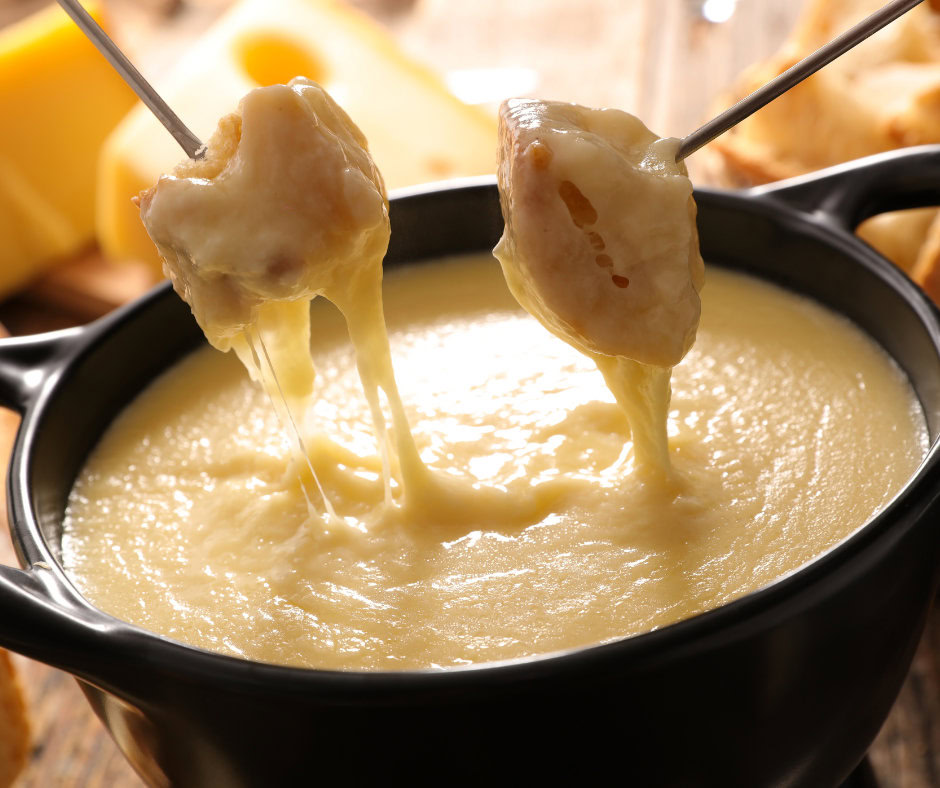
- Cheese fondue: Melted cheese eaten with bread you dip into a pot that sits over a portable open flame and keeps the cheese melted and warm. This indulgent Swiss dish is also enjoyed in Liechtenstein in the winter months.
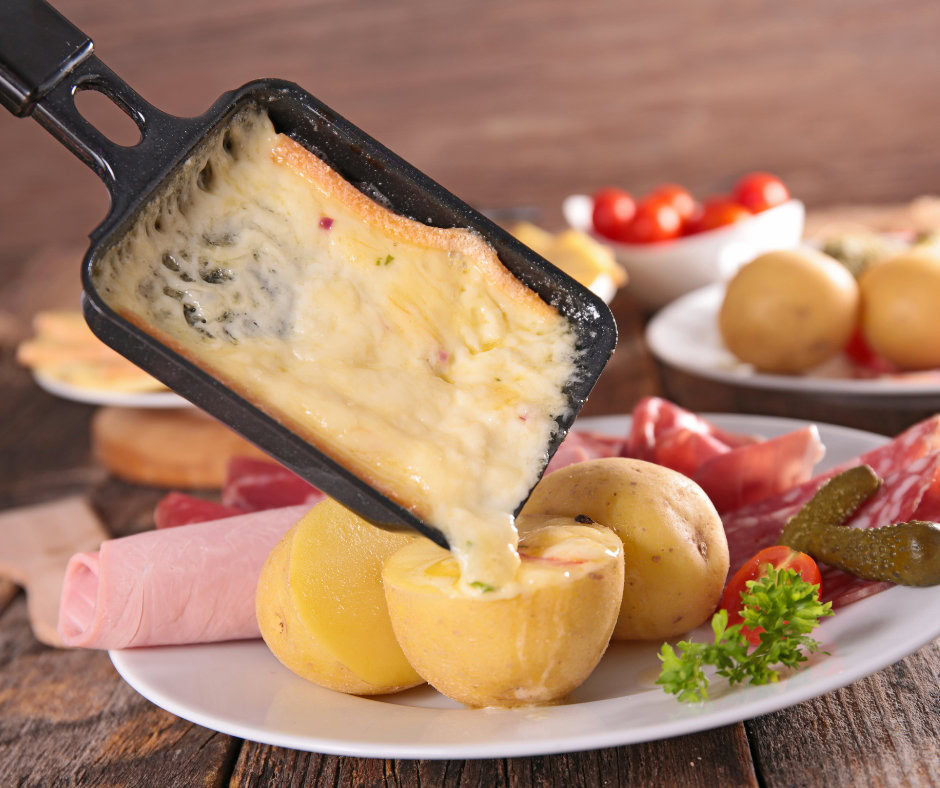
- Raclette: Melted cheese usually do-it-yourself style. Restaurants will either have specific dishes that help you “scrape” the melting cheese, or give you small paddles that you place over an open flame, usually on a candle, to melt the cheese. Once melted, you can pour it over potatoes and pickles such as cornichons.
- Marmorgugelhopf: A marble cake that is popular in many German-speaking countries, including Liechtenstein. It’s a sweet, dense cake often served with coffee or tea.
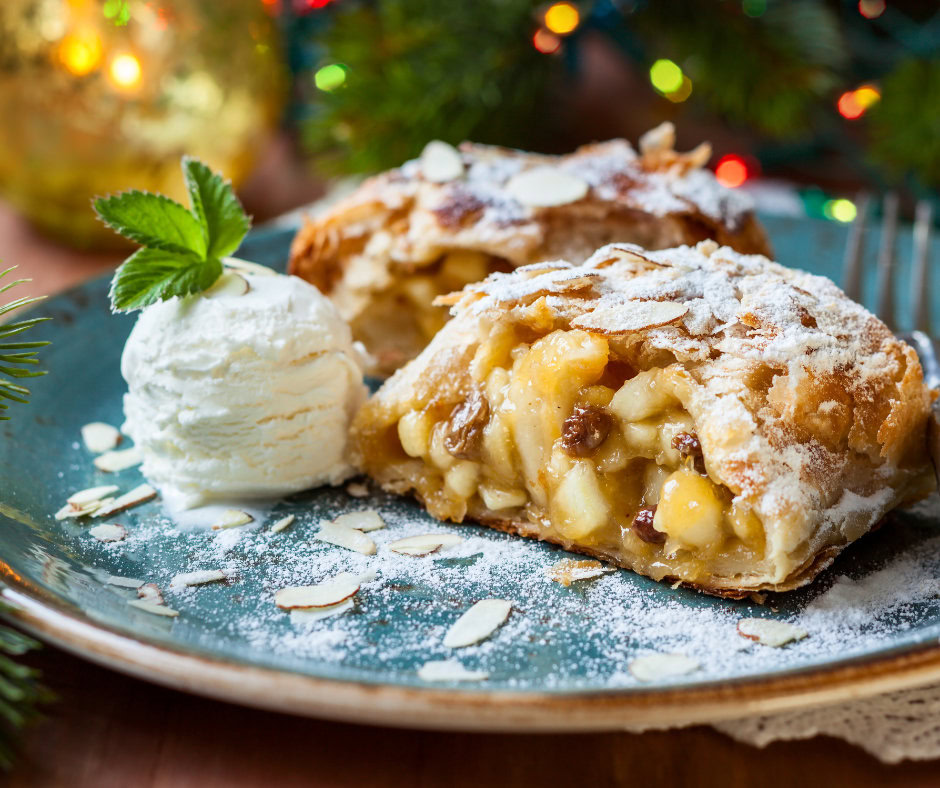
- Apple Strudel: Originally Austrian but also popular in Liechtenstein, this flaky apple pastry is filled with spices, cinnamon, raisin and and sometimes nuts.
Best drinks to try in Liechtenstein
Liechtenstein is famous for both brewing its own beer as well as making wine.
- Beer: Brauhaus brews beer by hand in Liechtenstein and offers traditional lager, a darker malt beer and a wheat beer.
- Wine: Historically, everyone made their own wine in the country as a means to supplement their income. Nowadays, there are still 100 wineries making wine professionally and benefiting from the Alpine weather and the Rhine Valley.
Further reading about Liechtenstein
This tiny country is rarely featured in movies and books but do check out Liechtenstein: A Modern History by David Beattie. This offers a comprehensive look at the history and development of Liechtenstein. It provides context for understanding the country and could be of interest to readers looking to learn more about the setting for fictional works.
